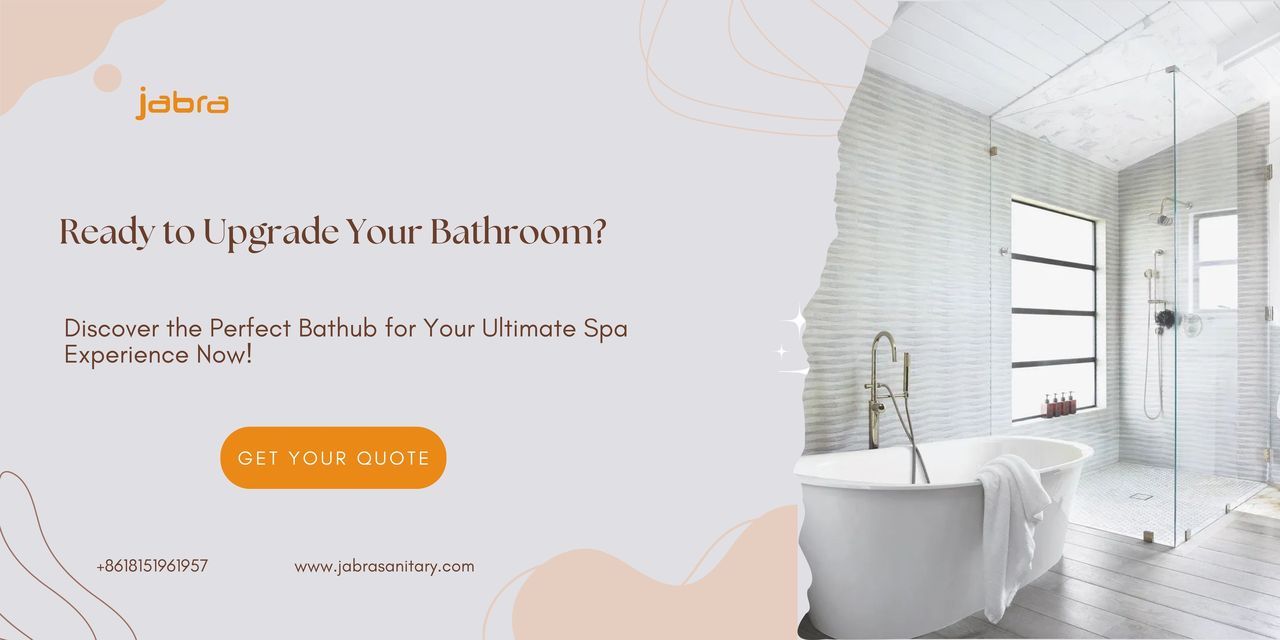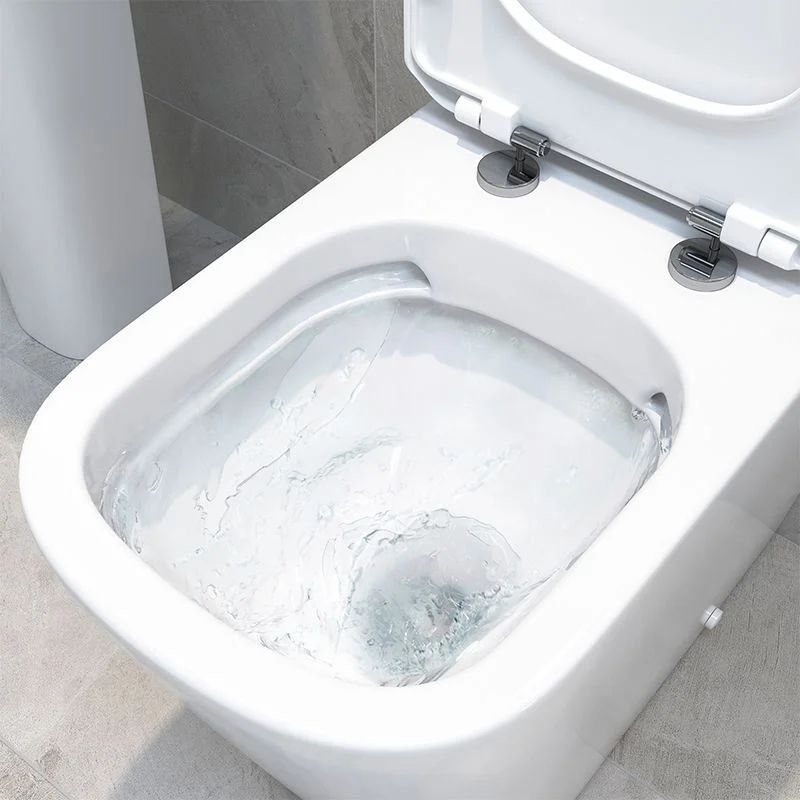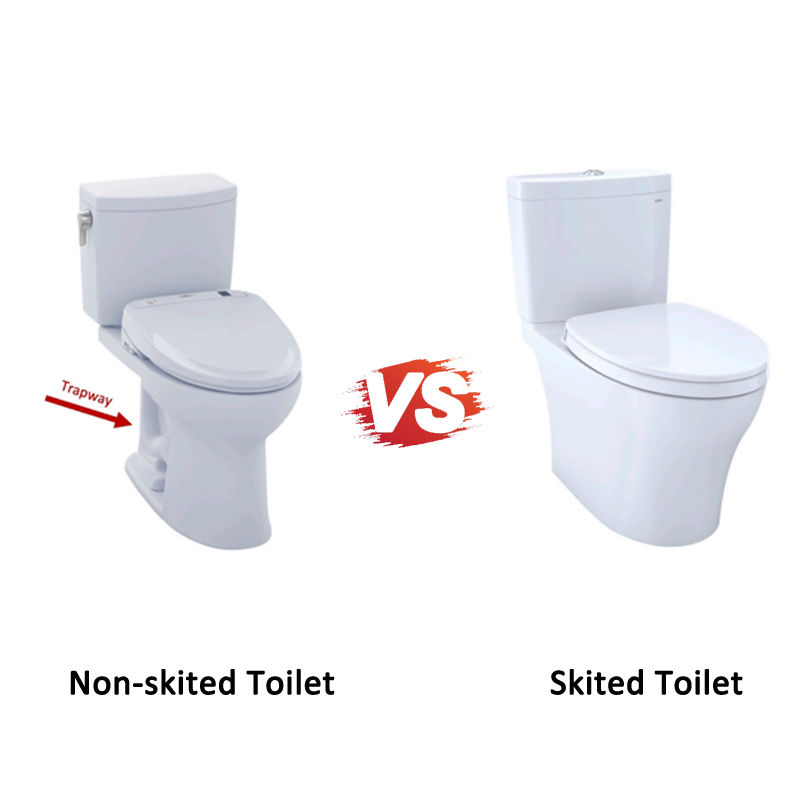 English
English
Jabra Sanitary is a sanitaryware supplier offering toilets, sinks, faucets, bathtubs, etc., at competitive prices. If you're a distributor, wholesaler, or project contractor, get a quote today!
 $23.9 Limited-time Offer
$23.9 Limited-time Offer Consignment Policy
Consignment Policy 20 Years of Experience
20 Years of Experience
Acrylic tubs are incredibly popular in modern bathrooms due to their affordability, lightweight construction, and versatility in design. The process of creating an acrylic bathtub involves shaping the acrylic into the desired bathtub form and then reinforcing it with additional layers for strength and insulation.
Acrylic tubs are available in various sizes, shapes, weights and finishes. Are acrylic tubs good? Do you want to know the mystery of acrylic tubs? The article tells you all about acrylic bathtubs, including what is an acrylic tub, acrylic bathtubs pros and cons, how long do acrylic tubs last, etc.
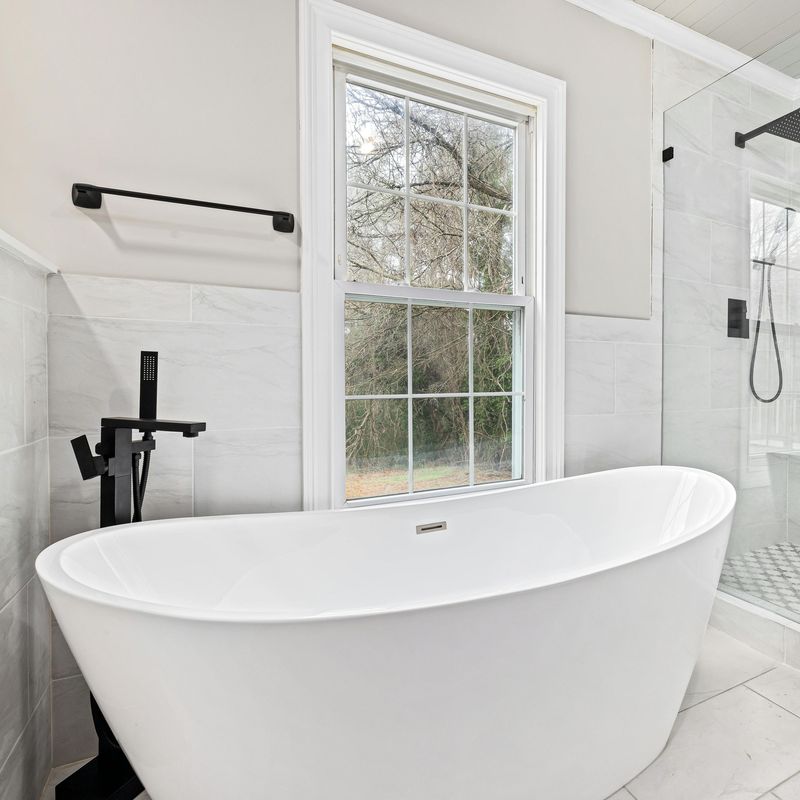
Table of Contents
What is an Acrylic Tub?
Are Acrylic Tubs Good? Pros and Cons of Acrylic Tubs
Acrylic Tub Shapes, Materials, Sizes, and Weights
Acrylic vs Cast Iron vs Fiberglass Bathtub
How to Clean an Acrylic Tub Without Scratching
How Long Do Acrylic Tubs Last?
FAQs
Final Thoughts: Looking to Upgrade Your Tub?
What is an Acrylic Tub?
An acrylic bathtub is a bathtub that combines the strengths of acrylic and fiberglass materials. By utilizing vacuum-formed acrylic sheets reinforced with fiberglass, manufacturers create a bathtub that overcomes the individual limitations of both materials.
The acrylic layer addresses fiberglass's primary weakness—its poor durability—while simultaneously solving its porosity problem. Unlike traditional fiberglass tubs, which absorb water and are prone to warping, the non-porous acrylic surface creates an effective barrier that prevents water penetration.
This construction method results in a more robust and long-lasting bathtub that maintains its structural integrity and appearance over time.
Are Acrylic Tubs Good? Pros and Cons of Acrylic Tubs
Acrylic tubs come with their advantages and drawbacks. If you're considering whether an acrylic tub is the right choice for your bathroom, here's a breakdown of acrylic bathtubs pros and cons to help you make an informed decision:
Pros of Acrylic Tubs
Affordable for Purchase
Acrylic tubs are budget-friendly compared to other options like cast iron or stone bathtubs. Their lower manufacturing costs make them accessible for homeowners looking to enhance their bathrooms without overspending. <Check the best bathtubs>
Lightweight for Easy Installation and Replacement
Acrylic tubs are significantly lighter than materials like cast iron or steel. This reduces transportation costs and makes installation faster and more convenient.
Durable for Long-Lasting Use
Despite being lightweight, acrylic tubs are durable. They are reinforced with fiberglass or other materials. Therefore, they can withstand daily use while maintaining their structural integrity for years.
Good Heat Retention, Keeping Bath Water Warm
Acrylic tubs excel in heat retention, keeping your bathwater warm longer compared to some other materials. This property enhances the bathing experience, making them ideal for soaking tubs.
Customization Options in Shapes, Sizes, and Styles
One of the standout features of acrylic tubs is their design flexibility. Whether you need a compact tub for a small bathroom or a spacious freestanding tub, acrylic can be molded into countless shapes, sizes, and styles.
Non-Porous Surface
Acrylic is a non-porous material, meaning it resists water absorption. This quality not only prevents mold and mildew growth but also makes the tub easy to clean and maintain over time.
Resistant to Cracks
The flexibility of acrylic makes it less prone to cracking compared to rigid materials like porcelain. Even with regular use, acrylic tubs remain resilient and functional.
Repairable if Scratched
Minor scratches on acrylic tubs can be repaired easily with a polishing kit or buffing. These tools restore their original appearance without needing replacement.
High-Gloss, Which Can Maintain Its Shine for Years
Acrylic tubs feature a high-gloss finish that mimics the luxurious look of more expensive materials. With proper care, this shine can be maintained for years, adding elegance to your bathroom.
Suitable for Homes with Kids or High Tub Usage
The durability and scratch-resistant nature of acrylic tubs make them suitable for families with children or high-usage bathrooms. Their smooth surface is safe and comfortable for all ages.
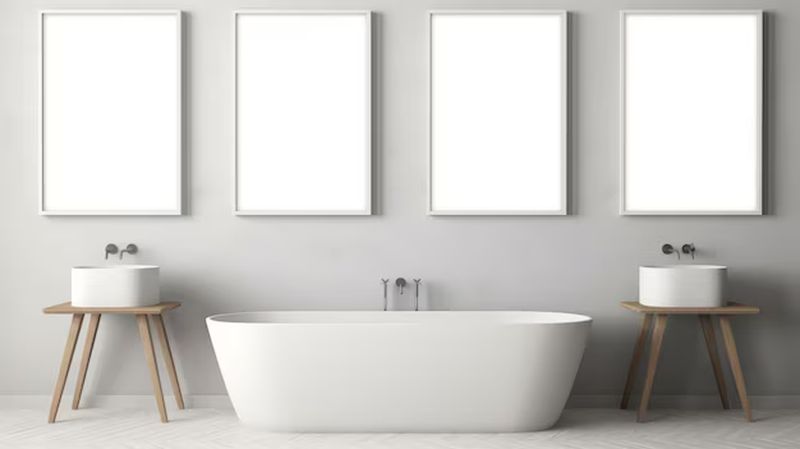
Cons of Acrylic Tubs
May Feel "Hollow"
Due to their lightweight construction, acrylic tubs may lack the solid feel of heavier materials like cast iron. Some users find this less satisfying, especially if they prefer a more substantial bathtub.
Not the Most Luxurious Option
While acrylic tubs are attractive, they don't carry the same premium appeal as natural stone or cast-iron tubs.
The Surface Is Easily Scratched
Although scratches can be repaired, acrylic tubs are more prone to surface scratches than harder materials. Care must be taken to avoid using abrasive cleaning products or rough scrubbing tools.
Prone to Discoloration and Stains
Over time, acrylic tubs may develop discoloration or stains, especially if exposed to hard water, improper cleaning, or certain bath products. Regular maintenance is required to preserve their appearance.
Sensitive to Abrasive Cleaners
Abrasive cleaners or harsh chemicals easily damage acrylic's non-porous surface. Gentle and non-abrasive cleaning agents are essential to avoid dulling the tub's finish.
Acrylic Tub Shapes, Materials, Sizes, and Weights
Whether you're designing a cozy bathroom or a luxurious spa-like retreat, there's an acrylic tub to suit your needs.
Let's explore the shape, material composition, size, and weight of popular acrylic bathtubs.
Shapes of Acrylic Tubs
One of the defining features of acrylic tubs is the wide range of shapes they offer. Here are the most common shapes:
Rectangular Tubs
Rectangular acrylic tubs are the most traditional and widely used shape, ideal for standard bathroom designs. They are perfect for built-in tub configurations and provide a classic and functional bathing experience.
Oval Tubs
Oval tubs bring a touch of elegance and sophistication to the bathroom. Their smooth and rounded edges create a softer aesthetic while maximizing comfort for soaking baths.
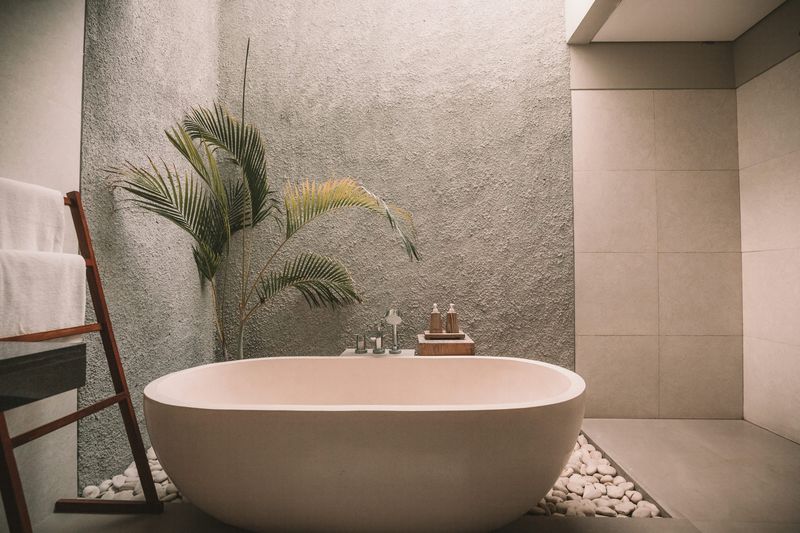
Materials Used in Acrylic Tubs
Acrylic Sheets
The foundation of the tub is a sheet of high-quality acrylic that is heated and molded into the desired shape. This material is valued for its smooth, non-porous surface and glossy finish.
Fiberglass Reinforcement
To enhance strength and stability, the molded acrylic is reinforced with layers of fiberglass. This ensures the tub is durable and resistant to cracking or warping over time.
Resin and Composite Layers
Some acrylic tubs are further reinforced with resin or composite materials, improving heat retention and increasing the tub's overall weight capacity.
Sizes of Acrylic Tubs
Small Tubs
Dimensions: 48 to 55 inches in length, 30 to 32 inches in width.
Best For: Small bathrooms, guest bathrooms, or areas with limited space.
Standard Tubs
Dimensions: 60 to 66 inches in length, 32 to 36 inches in width.
Best For: Most residential bathrooms offer ample space for comfortable bathing.
Large Tubs
Dimensions: 70 to 80 inches in length, 40 inches or more in width.
Best For: Master bathrooms or luxury settings where extra space is available.
Custom Sizes
Acrylic's flexibility allows manufacturers to create custom sizes to accommodate unique bathroom layouts.
Weights of Acrylic Tubs
The weight of acrylic tubs depends on their size and design but remains manageable for easy transport and installation. Here's an overview:
Small Acrylic Tubs
Weight: 50 to 70 pounds.
Features: Ideal for apartments or smaller bathrooms, these tubs are easy to handle and install.
Standard Acrylic Tubs
Weight: 80 to 120 pounds.
Features: These are the most common weights, offering a balance between sturdiness and ease of installation.
Large Acrylic Tubs
Weight: 130 to 180 pounds, depending on reinforcements like fiberglass or composite layers.
Features: Despite their larger size, they remain significantly lighter than cast iron tubs.
Acrylic vs Cast Iron vs Fiberglass Bathtub
When selecting the perfect bathtub for your bathroom, understanding the differences between acrylic, cast iron, and fiberglass options is essential.
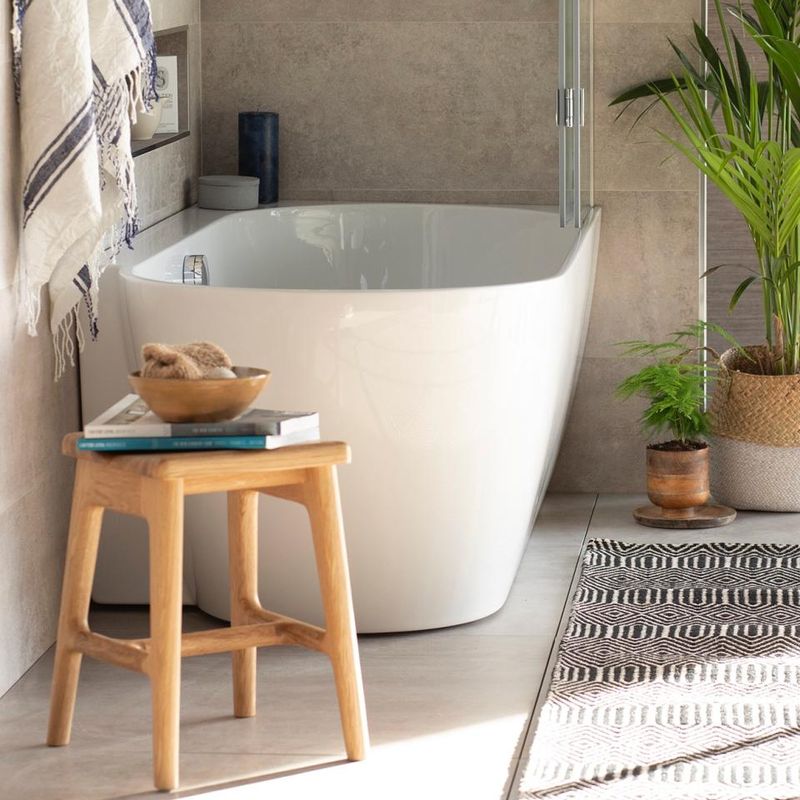
Each material has unique strengths and weaknesses. Below, we compare these three popular materials based on weight, appearance, durability, maintenance, heat retention, and cost to help you make an informed decision.
Weight
Acrylic: Acrylic tubs are lightweight, typically weighing between 50 to 180 pounds. Their lighter weight makes them easier to transport, install, and replace, especially in upper-level bathrooms or homes with structural constraints.
Cast Iron: Cast iron tubs are significantly heavier, ranging from 250 to 500 pounds. While their weight adds to their stability, they often require reinforced flooring and professional installation.
Fiberglass: Fiberglass tubs are the lightest, usually weighing 50 to 100 pounds. They're easy to handle and ideal for budget-conscious or temporary installations.
Winner: Acrylic tubs strike a balance between sturdiness and manageable weight.
Appearance
Acrylic: Available in a wide variety of colors, shapes, and finishes, acrylic tubs can be molded into modern or traditional styles. Their high-gloss surface provides a sleek and polished look that complements most bathroom aesthetics.
Cast Iron: Cast iron tubs often feature a porcelain enamel coating that delivers a rich and classic appearance. Popular styles include clawfoot and freestanding designs, which are ideal for luxury bathrooms.
Fiberglass: Fiberglass tubs typically have a matte or semi-gloss finish. However, their appearance is less refined than acrylic or cast iron. They may look dull or fade over time.
Winner: Acrylic excels in versatility, while cast iron wins for timeless luxury. Fiberglass is better suited for simple and budget-friendly designs.
Durability
Acrylic: Durable enough for everyday use, acrylic is resistant to cracking and chipping. However, it's not as strong as cast iron and may require occasional repairs if scratched.
Cast Iron: Cast iron tubs are the most durable option, capable of lasting decades or even a lifetime with proper care. Their porcelain enamel surface resists most wear and tear, though heavy impacts can cause chipping.
Fiberglass: Fiberglass is the least durable material. It is prone to cracking, scratching, and fading. It is more suitable for temporary or low-use bathrooms.
Winner: Cast iron is unmatched in durability, while acrylic offers a long-lasting and repairable alternative.
Maintenance
Acrylic: Acrylic tubs are relatively low-maintenance. Their non-porous surface resists mold, mildew, and stains, making cleaning a breeze. Gentle and non-abrasive cleaners work best to preserve the glossy finish.
Cast Iron: Cast iron tubs require minimal maintenance to retain their beauty, though the enamel surface can be more challenging to clean if chipped. Avoid harsh chemicals that may damage the coating.
Fiberglass: Fiberglass tubs require frequent cleaning to prevent stains and scratches. Over time, their surface may become dull and harder to maintain.
Winner: Acrylic offers the easiest maintenance with a balance of durability and stain resistance.
Heat Retention
Acrylic: Acrylic tubs retain heat well. They provides a warm and comfortable bathing experience without excessive energy loss.
Cast Iron: Cast iron has superior heat retention, keeping water warm for extended periods. This makes it ideal for long and relaxing baths.
Fiberglass: Fiberglass has the weakest heat retention, as its thinner material allows water to cool quickly.
Winner: Cast iron is the best for heat retention.
Cost
Acrylic: Acrylic tubs are moderately priced, typically ranging from $300 to $1,200, depending on size, style, and additional features. They provide excellent value for their durability and aesthetics.
Cast Iron: Cast iron tubs are the most expensive, with prices ranging from $900 to $3,000 or more. Their longevity and luxurious appearance justify the higher cost.
Fiberglass: Fiberglass tubs are the most affordable, with prices as low as $150 to $500. However, their limited durability may lead to higher long-term costs.
Winner: Acrylic offers the best balance of cost, quality, and appearance, while fiberglass is ideal for budget installations.
The Comparison Table
Aspect |
Acrylic |
Cast Iron |
Fiberglass |
Winner |
|---|---|---|---|---|
Weight |
50 to 180 pounds, lightweight |
250 to 500 pounds, heavy |
50 to 100 pounds, lightweight |
Acrylic (balanced weight and sturdiness) |
Appearance |
Variety of colors, shapes, and finishes, sleek and polished |
Classic, porcelain enamel coating, often clawfoot or freestanding |
Matte or semi-gloss, less refined, may fade over time |
Acrylic (versatile), Cast Iron (luxury) |
Durability |
Durable, resistant to cracking and chipping, but not as strong as cast iron |
Most durable, porcelain enamel resistant to wear and tear |
Least durable, prone to cracking, fading, and scratching |
Cast Iron (best durability), Acrylic (long-lasting) |
Maintenance |
Low maintenance, resists mold, mildew, and stains |
Minimal maintenance, but enamel can be challenging to clean if chipped |
Requires frequent cleaning, may become dull |
Acrylic (easiest maintenance) |
Heat Retention |
Retain heat well, provide comfort |
Superior heat retention, ideal for long baths |
Weak heat retention, water cools quickly |
Cast Iron (best heat retention) |
Cost |
$300 to $1,200, moderately priced |
$900 to $3,000, expensive |
$150 to $500, most affordable |
Acrylic (best value), Fiberglass (budget-friendly) |
In conclusion, each bathtub material has its advantages and trade-offs:
Choose acrylic for versatility, affordability, and low maintenance.
Opt for cast iron if durability and luxury are your priorities.
Select fiberglass for lightweight and budget-friendly solutions.
How to Clean an Acrylic Tub Without Scratching
Acrylic tubs are known for their glossy, smooth surfaces and durability. However, improper cleaning techniques can cause scratches in acrylic bathtubs or dullness over time.
Here's how to safely clean your acrylic tub while preserving its shine:
Step-by-Step Acrylic Tub Cleaning Guide
Gather Materials: Use a soft sponge or microfiber cloth, a non-abrasive cleaner, and warm water. Avoid abrasive tools like scouring pads or hard-bristled brushes.
Rinse the Tub: Start by rinsing the tub with warm water to remove loose dirt or debris.
Apply Cleaner: Spray or apply a mild and non-abrasive cleaner specifically designed for acrylic surfaces. Avoid harsh chemicals like bleach, ammonia, or acetone.
Gently Scrub: Use a soft sponge or cloth to clean the tub in circular motions, focusing on stains or buildup. Be gentle to prevent unnecessary wear.
Rinse and Dry: Thoroughly rinse off the cleaner with warm water and dry the surface with a soft towel to prevent water spots.
Pro Tips for Acrylic Tub Maintenance
Clean your tub weekly to prevent soap scum and hard water stains.
Use a protective wax or polish periodically to maintain the tub's glossy finish.
Avoid abrasive or acidic cleaning agents to ensure long-term durability.
How Long Do Acrylic Tubs Last?
Acrylic tubs typically last between 10 to 15 years or more with proper care. The lifespan of an acrylic tub largely depends on the quality of the material and how well it is maintained.
Regular cleaning with non-abrasive products and avoiding harsh chemicals can help prevent scratches, stains, and discoloration. These practices help extend the life of acrylic bathtubs.
Additionally, acrylic's repairable nature allows minor scratches or damage to be buffed out. This ensures it maintains its aesthetic appeal and functionality for years to come. With proper maintenance, an acrylic bathtub is an excellent long-term investment.
FAQs
Here are some commonly asked questions about an acrylic bathtub:
How do I know if my tub is acrylic?
Gently tap on the surface. Acrylic tubs feel warm to the touch and produce a hollow sound when tapped due to their lightweight material.
Additionally, the surface is smooth and glossy. It may have a slight flex when pressure is applied.
Will acetone damage an acrylic tub?
Yes, acetone can severely damage an acrylic tub by dissolving its finish and causing discoloration or cracks. Always avoid using acetone or similar harsh chemicals on acrylic surfaces.
Will baking soda scratch an acrylic tub?
Baking soda is generally safe for cleaning acrylic tubs when mixed with water to form a paste.
However, avoid scrubbing aggressively, as the abrasive nature of dry baking soda may cause fine scratches.
Can an acrylic tub be painted or resurfaced?
Yes, acrylic tubs can be painted or resurfaced using special coatings. It's best to hire a professional to ensure a smooth and long-lasting finish.
How to remove nail polish from an acrylic bathtub?
Use rubbing alcohol or a non-acetone nail polish remover. Apply it gently with a soft cloth to avoid damaging the tub's finish. Rinse thoroughly after cleaning.
Final Thoughts: Looking to Upgrade Your Tub?
An acrylic tub is an excellent choice for homeowners seeking a balance between affordability, style, and practicality. Its lightweight nature, durability, heat retention, and customizable designs make it a popular option for modern bathrooms.
If you choose an acrylic bathtub, remember to follow our tub cleaning guide in this article. Ready to purchase an acrylic bathtub, contact us to get a quote.







